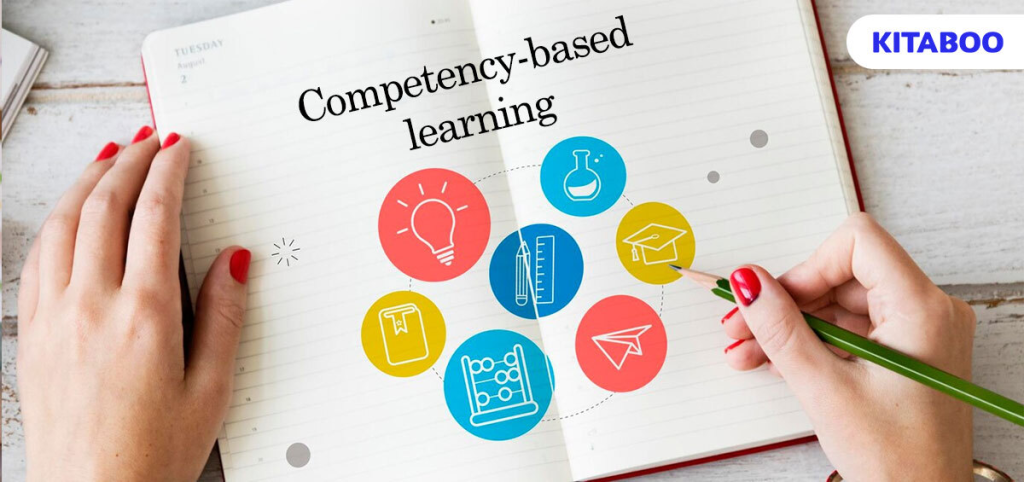
Transforming Education through Competency-Based Learning
Competency-based learning (CBL) is an educational approach that focuses on students acquiring specific skills or competencies at their own pace. It is a transformative initiative that has been taken up by several academic authorities across the globe. Recently, the NEP policy in India (National Education Policy 2020) has emphasized mastery of skill and knowledge rather than the traditional model of acquiring scores or memorization.
This approach promotes the fair evaluation of a students’ holistic progress. It is based on encouraging learners to demonstrate proficiency in a particular skill, providing access to personalized learning paths, and contributing to a flexible educational experience.
Here are some reasons why the traditional educational setting is transforming into a competency-based learning setting:
- The need to derive actual learning outcomes from a curriculum that is not based on a fixed timeframe.
- To help students progress at their own pace.
- To assess individual potential, capability, and ability to demonstrate competency in a given area.
- To emphasize that every learner is unique and has an individualized and flexible learning experience.
- To make sure that every learner acquires specialized support in a particular field before moving on to the next.
- To prepare learners to deal with real-world problems and be ready for the challenges of the future.
KITABOO is a specialized digital textbook platform that encourages and imbibes competency-based learning by promoting related assessments. Such services streamline and enhance the education process, thus offering seamless support to learners.
Table of Contents
I. The Evolution of Competency-Based Learning (CBL)
II. The Shift to Competency-Based Learning
III. How to Implement Competency-Based Learning in the Modern Learning Environment
-
- Step 1: Identify Specific Competencies That Students Should Master.
- Step 2: Develop Clear and Measurable Frameworks for Each Competency.
- Step 3: Design Assessments Aligned with the Competencies
- Step 4: Implement Criteria for Mastery and Progression
- Step 5: Leverage Technology
- Step 6: Provide Additional Support
- Step 7: Devise Feedback Mechanisms
- Step 8: Aim for Continuous Improvement
IV. Conclusion
The Evolution of Competency-Based Learning (CBL)
Competencies are skills, abilities, and the knowledge one derives from an education. There was a time when such competencies were measured using time-based models or traditional assessments. The number of degrees or diplomas awarded to a student was evidence of the competency or skill gained by that individual.
However, there has been a tremendous shift from the orthodox approach to the contemporary system of education, wherein the focus is on the acquisition of competencies and not on earning a certain number of credits.
CBL focuses on manageable learning objectives, real-time evaluation, tracking using data analytics, personalized approach, performance in assessments that are formulated in real-world scenarios, and transparency and clarity in learning modules.

The Shift to Competency-Based Learning
Educational boards and systems across the globe have shifted their conventional educational philosophies to progressive education.
Competency-based learning has gained traction because of its focus on mastery and personalized learning. It has effectively addressed the limitations of traditional education models by preparing learners for the challenges of the future.
Some of the key changes brought about by this are:
- Emphasizes the mastery of knowledge and skills
- Aligns a students’ practical skills with industry trends and market-needed skills
- Tailors education to individual needs
- Allows learners to move at their own pace
- Integrates real-world applications
- Continuously assesses competencies, provides timely feedback, and helps students with areas of improvement
- Leverages technology to provide flexibility, personalization, real-world relevance, immediate feedback, and data-driven insights
- Enhances the overall learning experience in a digital environment
How to Implement Competency-Based Learning in the Modern Learning Environment
Implementing this approach to learning involves a thoughtful process to ensure successful integration. Here’s a step-by-step guide:
Step 1: Identify Specific Competencies That Students Should Master
The objective should be to implement a plan according to the existing curriculum. Review standards, gather input from educators and professionals, and consider both foundational and advanced skills before formulating competency-based learning components.
Ensure the components you design encourage the development of critical reasoning, communication, decision-making, leadership, and problem-solving skills.
Step 2: Develop Clear and Measurable Frameworks for Each Competency
The next step is to create a comprehensive framework that should assess observable behaviors and actions. You must specify knowledge and skills associated with each competency and design assessments accordingly at different levels of thinking.
You must quantify where possible and design performance tasks that mirror real-world applications. It is also imperative to align competency frameworks with industry standards and enhance the practical applicability of competencies.
With digital publishing platforms like KITABOO, you can design interactive online competency-based assessments that align with contemporary learning frameworks.
Step 3: Design Assessments Aligned with the Competencies
Implement a variety of assessment methods, including formative and summative assessments. You must identify the key performance indicators associated with specific actions that demonstrate mastery.
Your assessment methods can include written exams, demonstrations, projects, case studies, presentations, and portfolios. Develop performance tasks that require students to apply their knowledge and skills and then finally facilitate a fair and objective evaluation.
Step 4: Implement Criteria for Mastery and Progression
Establish a criteria for mastery and progression. Students should thrive on demonstrative proficiency, not based on traditional time constraints. When applicable, you must use quantitative measures to define this criteria.
Use numerical scores, percentages, and other such indicators that align well with the chosen assessment method. Establish a fair threshold for progression and recognize the interdependencies of competencies.
Step 5: Leverage Technology
Implement a robust Learning Management System (LMS) and utilize data analytics. Facilitate content distribution, assessment, and progress tracking using dedicated software and automation.
It is important to integrate online tools to provide feedback, allow students to track performance, and address areas of improvement.
It is equally essential to provide digital student resources like eBooks, simulations, AR and VR, videos, gamified elements and other interactive modules that leverage technology to enhance competency-based learning.
Step 6: Provide Additional Support
Additional support such as professional development and real-life experiences and best practices, encourage competency-based learning.
Educators must implement support systems for students who may need additional assistance. This could include tutoring, peer mentoring, or targeted interventions.
Step 7: Devise Feedback Mechanisms
It is imperative to establish regular feedback loops between students and educators. Data analytics helps educators gain insight into a student’s progress and then use these insights to inform instructional decisions.
Step 8: Aim for Continuous Improvement
Make the most of collaborative learning opportunities such as group projects, discussions, or interdisciplinary activities. Continuous Improvement can be encouraged by refining the competency frameworks based on feedback and data analysis.
It is equally important to implement a robust system for evaluating the effectiveness of the competency program. Assess student outcomes, teacher satisfaction, and overall program impact and remain flexible and adaptable to changes.
Adjust the program based on feedback, emerging educational trends, and evolving needs.
Conclusion
Competency-based learning recognizes mastery of skill and knowledge, which collectively creates an educational framework that is learner-centric, adaptive, and focused. The objective is to provide a more tailored and effective learning experience.
Implementing it involves creating a well thought-out step-by-step plan. Following the steps mentioned above and learning about the relevance of this approach encourages a personalized and outcome-driven approach to modern education.
KITABOO is a digital textbook platform that offers seamless support to educators and learners at every step of their pedagogical and learning journeys, respectively. It empowers you to strategize competencies efficiently, giving importance to the approach and applying CBL techniques in online assessments, student resources, and other areas of imparting education.
To know more, write to us at KITABOO@hurix.com. Connect with us to start a conversation.
Discover how a mobile-first training platform can help your organization.
Kitaboo is a cloud-based platform to create, deliver & track mobile-first interactive training content.





